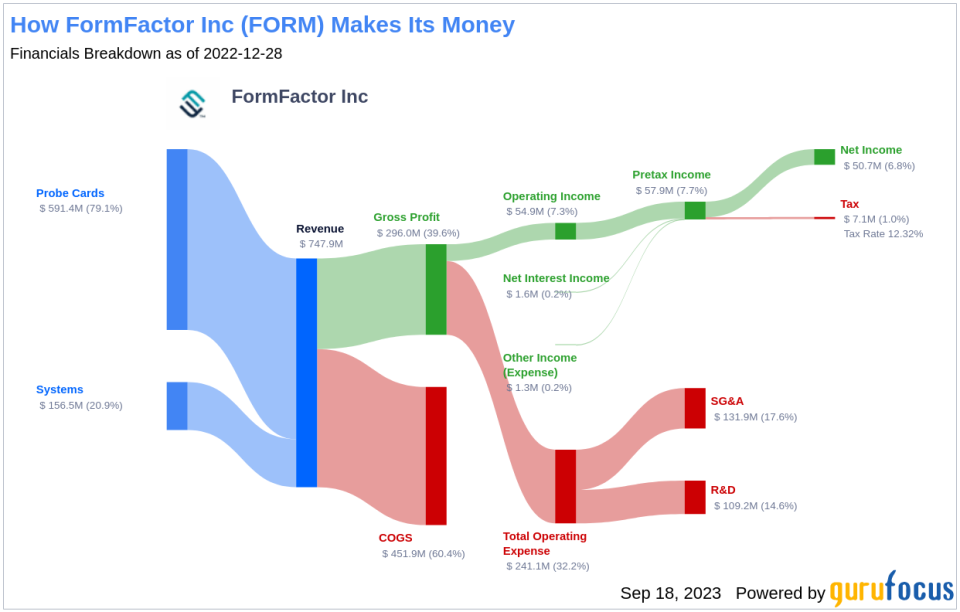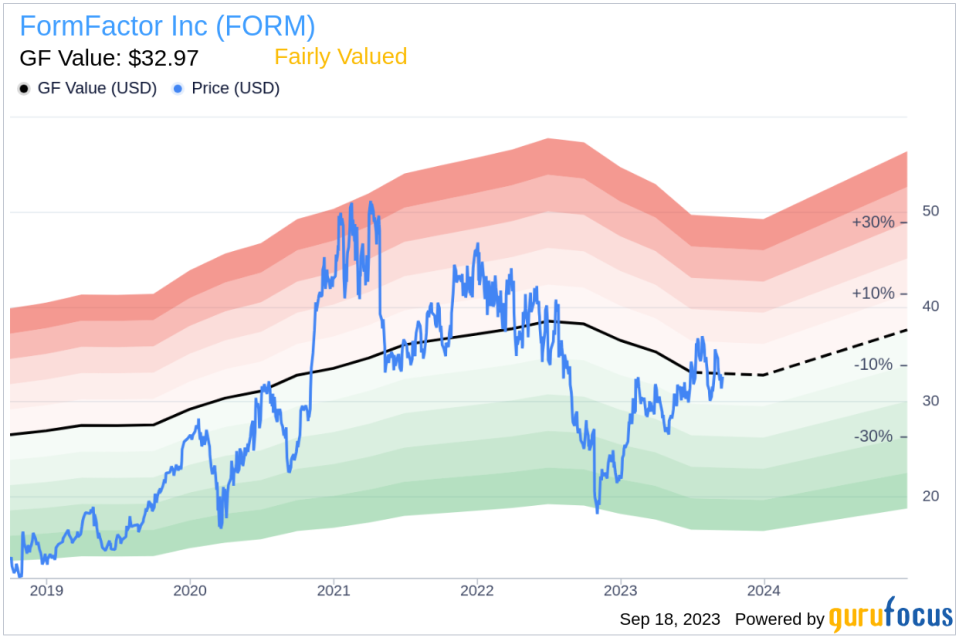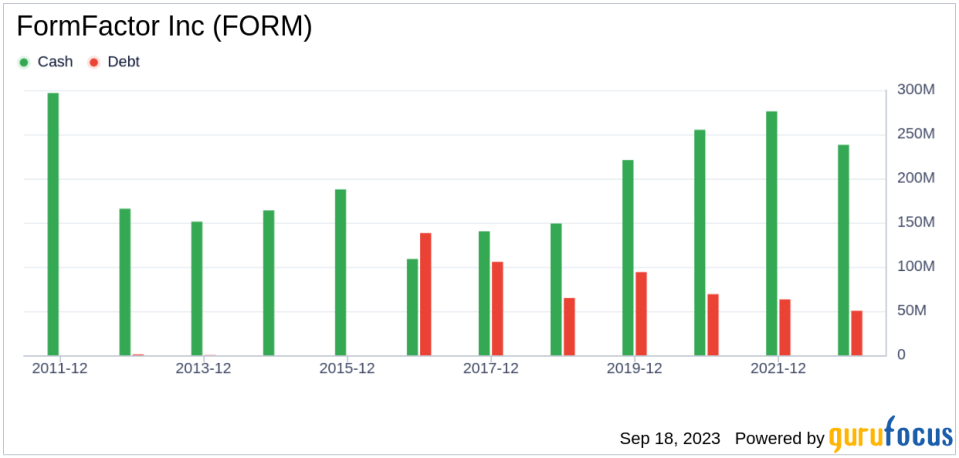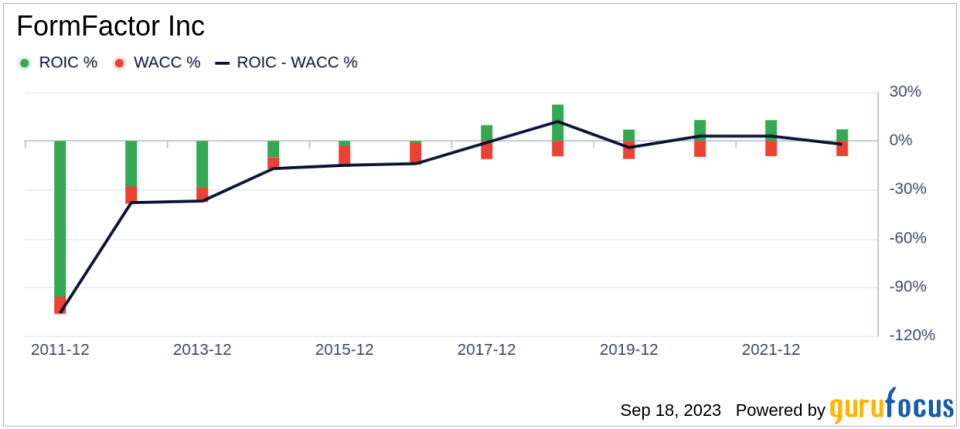FormFactor (FORM) Fair Valuation: A Comprehensive Analysis
FormFactor Inc (NASDAQ:FORM) has recently seen a daily gain of 3.66%, with a 6.8% increase over the last three months. However, its Loss Per Share stands at 0.09. This raises a critical question: Is FormFactor's stock fairly valued? This article aims to delve into this question by providing a thorough valuation analysis of FormFactor's stock. We encourage you to read on for a comprehensive understanding of FormFactor's financial performance and intrinsic value.
Company Overview
FormFactor Inc designs, develops, manufactures, sells, and supports semiconductor probe card products. The company operates in two reportable segments: Probe Cards Segment and the Systems Segment. Probe cards and analytical probes are included in the Probe Cards Segment, while probe stations and thermal sub-systems are included in the Systems Segment. Probe cards generate the majority of the company's revenue. FormFactor offers multiple product lines, including analytical probes, probe stations, thermal sub-systems, and related services.
At its current price of $32.54 per share, FormFactor has a market cap of $2.50 billion. The company's GF Value, an estimation of fair value, stands at $32.97, indicating a fairly valued status.
Understanding GF Value
The GF Value is a unique measure of a stock's intrinsic value, computed based on historical trading multiples, a GuruFocus adjustment factor based on past performance and growth, and future business performance estimates. The GF Value Line on our summary page provides an overview of the fair value at which the stock should ideally be traded.
FormFactor's stock shows every sign of being fairly valued according to the GF Value calculation. This implies that the long-term return of its stock is likely to be close to the rate of its business growth.
Financial Strength Analysis
Investing in companies with poor financial strength carries a higher risk of permanent loss. Therefore, it is crucial to assess the financial strength of a company before buying its stock. Financial strength can be evaluated by looking at the cash-to-debt ratio and interest coverage. FormFactor has a cash-to-debt ratio of 4.81, which is better than 63.53% of 902 companies in the Semiconductors industry. Overall, FormFactor's financial strength is rated 8 out of 10, indicating a strong financial position.
Profitability and Growth
Investing in profitable companies, especially those that have demonstrated consistent profitability over the long term, poses less risk. A company with high profit margins is also typically a safer investment than one with low profit margins. FormFactor has been profitable 6 over the past 10 years. Over the past twelve months, the company had a revenue of $670.20 million and a Loss Per Share of $0.09. Its operating margin is -1.96%, which ranks worse than 72.23% of 947 companies in the Semiconductors industry. Overall, GuruFocus ranks FormFactor's profitability at 6 out of 10, indicating fair profitability.
Growth is a critical factor in the valuation of a company. A faster-growing company creates more value for shareholders, especially if the growth is profitable. The 3-year average annual revenue growth of FormFactor is 7.8%, which ranks worse than 60.46% of 870 companies in the Semiconductors industry. The 3-year average EBITDA growth rate is -0.8%, which ranks worse than 78.17% of 774 companies in the Semiconductors industry.
ROIC vs WACC
Comparing a company's return on invested capital (ROIC) to its weighted cost of capital (WACC) is another way to evaluate its profitability. Return on invested capital (ROIC) measures how well a company generates cash flow relative to the capital it has invested in its business. The weighted average cost of capital (WACC) is the rate that a company is expected to pay on average to all its security holders to finance its assets. If the ROIC is higher than the WACC, it indicates that the company is creating value for shareholders. Over the past 12 months, FormFactor's ROIC was -1.74, while its WACC came in at 10.78.
Conclusion
In summary, the stock of FormFactor shows every sign of being fairly valued. The company's financial condition is strong, and its profitability is fair. However, its growth ranks worse than 78.17% of 774 companies in the Semiconductors industry. To learn more about FormFactor's stock, you can check out its 30-Year Financials here.
To find out the high-quality companies that may deliver above-average returns, please check out GuruFocus High Quality Low Capex Screener.
This article first appeared on GuruFocus.




